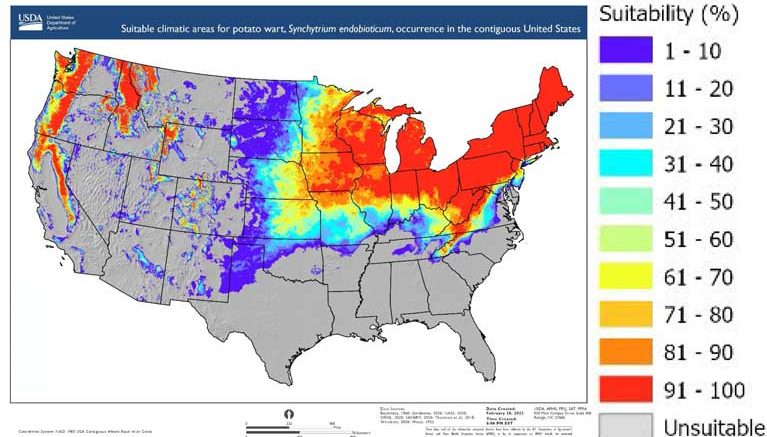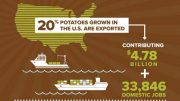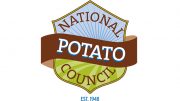|
Click to listen to this article
|
On October 14, USDA’s Animal Plant Health Inspection Service (APHIS) released a comprehensive report on the current status of the potato wart crisis on Prince Edward Island, Canada, stating that PEI’s potato wart infestation is “likely” larger than reported and that the disease is “almost certain to be introduced” to the United States without additional mitigation measures in place.
“This USDA report confirms the position of the U.S. industry over the past year and validates that the 2021 PEI export ban was entirely appropriate given the overwhelming disease risks,” said Kam Quarles, National Potato Council CEO.
In March 2022, the NPC issued a statement condemning the resumption of PEI table stock potato shipments.
APHIS Report Conclusions
- The full extent of the potato wart infestation in PEI is currently unknown.
- About half of potato production areas in the contiguous United States and all potato
production areas in Alaska have a suitable climate for potato wart establishment. - Without mitigation measures, potato wart is almost certain to be introduced to U.S. potato
production areas via seed potatoes imported from PEI. An estimated 37 percent of all PEI
seed potato imports will go to climatically suitable areas. - Introduction to U.S. production areas via potatoes for consumption may occur if fresh
manure from animals fed infested potato waste is applied to potato fields. Direct
application of infested potato waste to potato fields has a similar likelihood of
introduction. - Backyard potato gardens may become infested if infected table stock potatoes are used in
backyard compost. - Tools, equipment, or vehicles contaminated with infested soil are another pathway of introduction.






